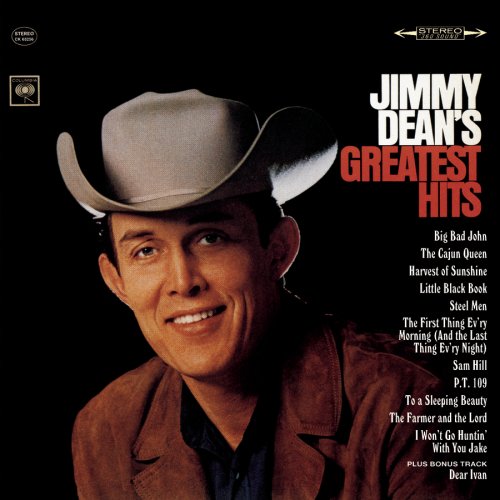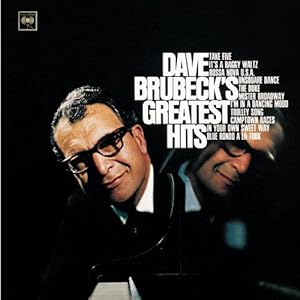There is at least one person out there who is a dedicated Ray Stevens fan, and I know this because there is a Ray Stevens blog (Google it). So I won’t say too much, just this: I grew up hearing Ray Stevens on the radio, so that may explain something about the odder aspects of my character, and I put my collection together from an album called
The Best Of Ray Stevens, an early compilation, which I probably picked up at Pyramid, which you know about because you’ve read my previous posts, and a K-Tel album, which I believe I bought at Rainbow’s Gold, a store on Cumberland in Winnipeg which was, while it lasted, associated with Red River Books.
•
Funny Man – It can’t be an accident that there are so many songs by men about hiding their true feelings, either by acting the clown - laughing on the outside, crying on the inside - (The Great Pretender, Tears Of A Clown, Tracks Of My Tears, Everyone Loves A Clown, Two Faces Have I, The Joker Went Wild etc), or by some other means, usually meteorological (Crying In The Rain). In this case, not only is Stevens’ minor hit from the spring of 1963 part of what was an evolving tradition, but the title also serves as a kind of signature song for his career. It took the likes of Jackson Browne to put an end to all this macho posturing.
•
Loved And Lost – Disputing the classic wisdom. In the acute stage of heartbreak. I’d like to hear what the sequel was a year later. All these bunch of songs were from 1963.
•
It’s Been So Long – And this may just be the sequel I was talking about. If so, he’s vindicated, at least in his own experience, but there’s a blandness to this middle of the road I-haven’t quite-found-my-own-style song, with a muted saxophone in the right channel, and a chorus straight out of Nashville. This is not the song that appeared on Harry Nilsson’s first album.
•
Just One Of Life’s Little Tragedies – Think about it, trivializing the serious by exaggerating the trivial. At least he confronts himself on this one.
•
Little Stone Statue – Again, “I never show a trace of emotion.” A tale of unrequited love. Makes me think about that song about the “wooden Indian.”
•
Ahab The Arab – The sheikh vs. the sultan. Don’t ask me to explain; I don’t get it either. Here’s where Ray hits the big time, with his combination of humour and inanity, and it’s not always easy to tell which is which. From the summer of 1962. Caution on this one, the original was on Mercury, but he rerecorded it for Barnaby later.
•
Saturday Night At The Movies – Not The Drifters hit. A story of a romance temporarily gone awry, but saved by a wayward toupé. Don’t ask me, it wasn’t my idea. And I don’t imagine that younger listeners would get the Porky Pig reference.
•
Harry The Hairy Ape – Wherein an ape becomes an inadvertent rock and roll star. I’m not sure how to take this. Ray’s second (and last) big success on Mercury, from the summer of 1963. This was also rerecorded for Barnaby, but it’s easy to tell the difference – the reference to the mashed potatoes is changed to the “boogaloo-shingaling” on the remake.
•
Speedball – I can’t make out whether the gruesomeness of this is due to innocence or lack thereof. It’s kind of funny though. His last Mercury hit, from the autumn of 1963.
•
Isn’t It Lonely Together – It’s hard to believe that there was a time that if your girlfriend (or not your girlfriend) got pregnant you had to marry her. That wasn’t always a happy ending. The version I have, from a K-tel album, is edited down to about a minute and a half. Also recorded by O. C. Smith.
•
Jeremiah Peabody’s Polyunsaturated Quick Dissolving Fast Acting Pleasant Tasting Green And Purple Pills – In 1964, Phil Spector had to lie about the length of You’ve Lost That Lovin’ Feeling, by the righteous Brothers, because the djs wouldn’t play anything longer than 3 minutes. Apparently they had no such reservations when it came to song titles. This is the song that put Ray on the charts back in the fall of 1961. Amazing what you could get back then for $1.98...
•
Indian Love Call – If this is meant to be silly, it doesn’t work. But as a straight update of Slim Whitman’s hit from 1955 it’s superb. Ray proves that he can really sing, there is a what sounds like a clavinet and what are definitely vibes, and a chorus that sounds like it just happened to be passing by. From the fall of 1975, and the latest song on this collection.
•
Gitarzan – The original book (Tarzan) was published in 1914 but the TV series ran from 1966 through 1968, so I guess that was the inspiration for this, which was a hit single in the spring of 1969. I remember grooving to this when I was 12. I was always partial to the monkey...
•
Mr. Businessman – Surely people are rarely this one-dimensional, but this indictment of the middle-class suburban dream hits pretty close to home. It was a hit in the fall of 1968, but it’s still relevant, evidenced by the sheer number of SUVs on the road. “Placing value on the worthless...”
•
Along Came Jones – Pop music for the TV generation. Originally by The Coasters, this late 60s (summer of ’69) hit was a slight update, of which the “hear come the train” refrain would have resonated with Rowan & Martins’ Laugh-In fans. Meanwhile the audience sounds fool nobody...
•
Freddie Feelgood (And His Funky Little Five Piece Band) – This is a novelty record. The novelty is Ray impersonating different musical instruments. That’s the novelty. Had he thrown in Gitarzan’s monkey, this’d been perfect. As it is, it barely scraped into the top 100, in the summer of 1966.
•
Nashville – For all his reputation as a novelty artist, Ray was best when he did straight music with a country flavour. Catalogue this one under songs that celebrate country music and songs that celebrate American cities. No relationship, as far as I know, with the film of the same name.
•
Turn Your Radio On – Imagine a world with no world wide web (in other words no YouTube or iTunes) and no MTV. Radio was a much bigger player than it is now. This is from the winter of 1971 – 1972. His “get in touch with God” lyric had nothing to do religion in its ordinary sense.
•
Everything is Beautiful – Ray’s retirement pension. This hit #1 in the spring of 1970. I’m not sure why. I’m pretty sure that it’s wrong. Not everything is beautiful, though I needn’t provide examples. I have a cover by Jim Nabors, which makes sense on so many levels...
•
Misty – Zounds! I will get tarred and feathered but I insist that he leaves Johnny Mathis in the dust. I do realize that this is apples and oranges, sort of, kind of, but after all it’s that same song. The countrification may be just what it needed. Whatever, it works. From the summer of 1975.
•
America (Communicate With Me) – Trying to understand what’s going on and how to respond and how to connect can be confusing and that’s what Ray is singing about here. Plus the hippy dream vs. establishment values. From the summer of 1970.
•
Sunday Morning Comin’ Down – It was late 1969, I was 12 years old and I was sitting in a small lunch counter with my father and some other fellow, and I had a teen magazine that I’d bought, and it had song lyrics in it, and it had this song, and the artist was identified as Johnny Cash, and that puzzled me, because I’d heard the song on the radio and it was Ray Stevens who did it. I guess Cash’s version got more attention overall, and it is certainly the one that people (meaning the media) remember(s), but Ray’s version was the one on the pop charts and on top 40 radio, and it was the first of the Kristofferson explosion, followed by Me And Bobbie McGhee by Gordon Lightfoot (the b side of If You Could Read My Mind, it got some airplay here), Help Me Make It Through The Night by Sammi Smith, For The Good Times by Ray Price, and Me And Bobbie McGhee by Janis Joplin. I like the clavinet, and the overall feeling of melancholy. From late 1969.
•
Moonlight Special – I must have never watched Midnight Special (1972 – 1981) because I had to Google to learn that Wolfman Jack was the weekly announcer. Here he is rendered in all his glory as “The Sheepdog,” as he introduces “Mildred Queen & The Dips” (now who do you suppose they are?) and some demented piano-pounding incoherent Neanderthal with a name that starts with Jerry Joe and ends with Jimmy Billy. This is actually mildly funny; compared to The Streak or Briget The Midget it’s the Marx Brothers. From the summer of 1974.
•
Have A Little Talk With Myself – As his world falls to pieces, our hero learns that being selfish does not pay. This dime store self help guide does not seem to have made it higher than #123 on the Billboard Hot 100 (and that would have been in early 1970), which is odd, because I remember hearing it on the radio. And me, for all its simplistic self-analysis, I kind of like it...
•
Bridget The Midget (The Queen Of The Blues) – in which we are treated to a narrative about an unbelievably awesome diminutive entertainer, the said entertainer who sounds like Ray Stevens on helium, her backup singers - a group called Strawberry & The Shortcakes (get it?) - who sound suspiciously like Alvin & The Chipmunks, and the constant interruptions of a pervert who wants nothing more than to assault the singer. Isn’t that funny? This isn’t even good enough to be lame, but the radio was playing it in the winter of 1970 / 1971.
•
The Streak – Streaking was a fad that lasted less time than the amount of time that this was on the charts. This was Ray’s second number 1 hit, and whereas the first (Everything Is Beautiful) was a cloying attempt at sentimentality, this was a failed attempt at humour. From the spring of 1974.



 Not to be confused with Tommy Hunter (a staple of Canadian TV in the 70s), Tommy Hunt was a decent R & B singer, at least the equal of the likes of James Carr or labelmate Chuck Jackson, who didn’t really seem to have gotten a break. My collection comes from The Scepter Records Story.
Not to be confused with Tommy Hunter (a staple of Canadian TV in the 70s), Tommy Hunt was a decent R & B singer, at least the equal of the likes of James Carr or labelmate Chuck Jackson, who didn’t really seem to have gotten a break. My collection comes from The Scepter Records Story.



